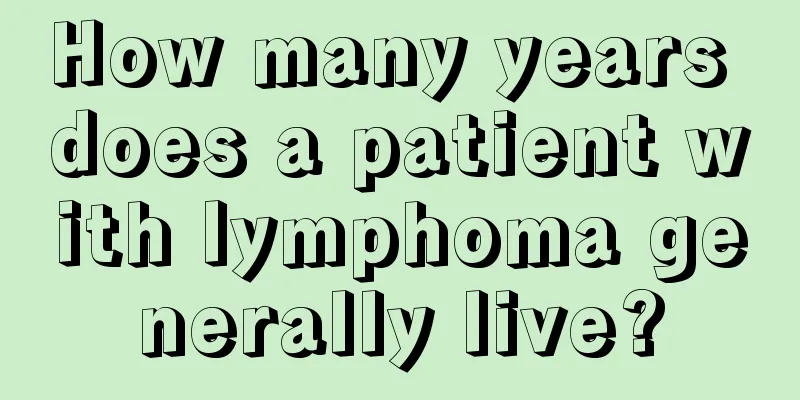After tooth extraction, the blood clot is very big like jelly

|
I believe everyone has experienced tooth extraction. When we were young, we would go to the hospital to have the canine teeth extracted. Some people would also go to the hospital to have those ugly teeth extracted for the sake of beauty and replace them with better-looking teeth. Generally, there will be bleeding after tooth extraction because the dental nerve is damaged. Some people will only bleed for a short while, but for some people, the blood will flow out in the form of blood clots after tooth extraction. So, why are the blood clots large like jelly after tooth extraction? Tooth extraction is a commonly used surgery in oral treatment. The wound healing process after tooth extraction can be divided into four stages: (1) Bleeding and blood clot formation: After tooth extraction, the blood in the tooth extraction wound will form a blood clot in about 15 minutes to seal the wound. It has the function of protecting the wound, preventing infection, and promoting normal wound healing. (2) Blood clot organization: A few hours after tooth extraction, the gum tissue shrinks and the extraction wound becomes smaller. This is also a reaction to protect the blood clot and promote healing. After 1 to 3 days, bundles of immature amorphous connective tissue fibers are formed in the tooth extraction wound, and this organizational process will take about 20 days to be completed. (3) Bone tissue formation: New bone formation begins as early as the 6th day. By the end of the 4th week, the new bone will fill the tooth extraction wound, but it will take 3 months for the bone tissue to be fully formed. (4) Epithelial coverage of tooth extraction wound: 2 to 3 days after tooth extraction, the gingival epithelium begins to grow from the surrounding area to the surface of the blood clot, but the final healing time varies greatly. The earliest epithelial healing can be seen on the 8th day, and the latest is not completely healed until the 28th day. This situation is caused by the failure to recover from blood vessel damage after tooth extraction. If there is a lot of bleeding, it is easy to form blood clots. These blood clots have a certain hemostatic effect and can usually be brushed off when brushing your teeth. However, it should be noted that it is not advisable to brush your teeth in the early stages of tooth extraction, as this can easily cause the wound to open and induce bleeding. Packing and pressure should be used to stop the bleeding. After a tooth is extracted, the blood clot should be in the extraction socket. Although it is very soft, it should not affect your eating. Just be sure to eat thin and soft food, try to eat liquid or semi-liquid food, and don't eat too hot or too hard food. Suggestions: Be sure to follow the doctor's instructions after tooth extraction and do not rinse your mouth or brush your teeth within 48 hours. If you are worried, you can also go to the dentistry department to check the formation of blood clots. Just eat normally, don't eat with the affected side, don't rinse your mouth or brush the wound vigorously, so as not to dislodge the blood clot and cause bleeding. Suggestions: Pay attention to oral hygiene, eat less irritating food, avoid alcohol and spicy food, and prevent infection. |
<<: What's wrong with jelly-like stool
>>: Will fat people get anemia?
Recommend
What should I do if I sprain my thigh
People walk with their legs every day. What shoul...
Diet therapy for breast cancer with the effect of promoting blood circulation and reducing swelling
Breast cancer patients may experience symptoms su...
Dietary considerations for patients with pancreatic cancer: these 5 types of food should be carefully selected
For pancreatic cancer patients, a reasonable diet...
What foods are good for liver cancer? Eat these foods if you have liver cancer
With the development and progress of society, can...
What are the benefits of using tea seed oil on your face?
Young women nowadays will look for various beauty...
What are the tips for cleaning kettle scale
Kettle is an electrical appliance that every hous...
Will drinking more water make your skin whiter?
There are many kinds of skin colors, including wh...
Can solar water heaters be used in winter?
Almost every household is using solar water heate...
Fat chin augmentation
If a person has an ugly chin, it will also affect...
What is the test that can diagnose prostate cancer
The prostate is an important part of the male bod...
What are the daily foods that can prevent prostate cancer
Foods that are recognized by the medical communit...
Can thyroid nodules be cured without surgery?
In today's social life, with the improvement ...
Is protein acidic or alkaline?
Protein is an amphoteric food because not all pro...
What are the fruits that can protect against radiation?
Nowadays, people from all walks of life are suffe...
There is a raised hard lump on the back of the head
It is not uncommon to have a hard bump on the bac...









